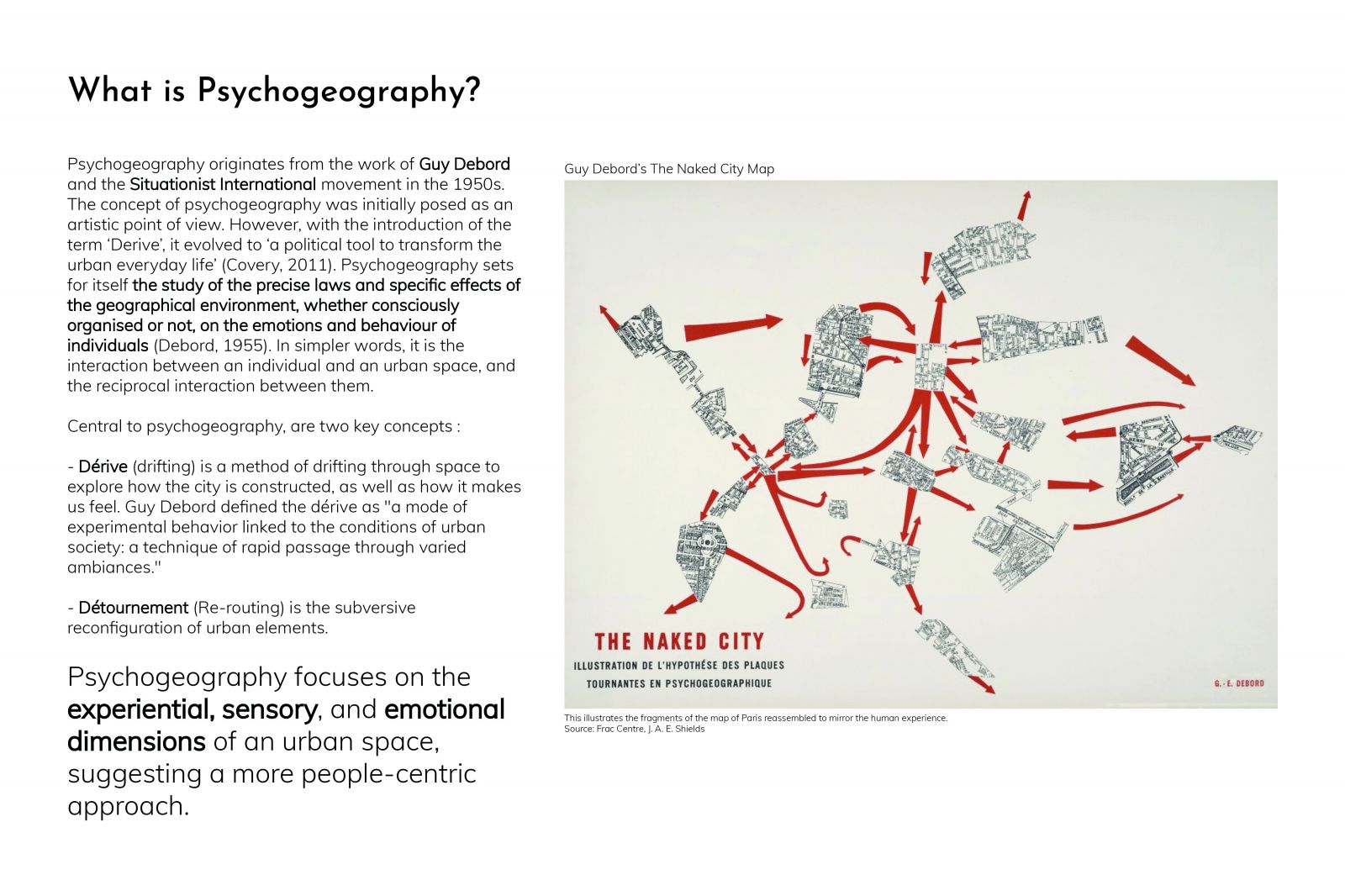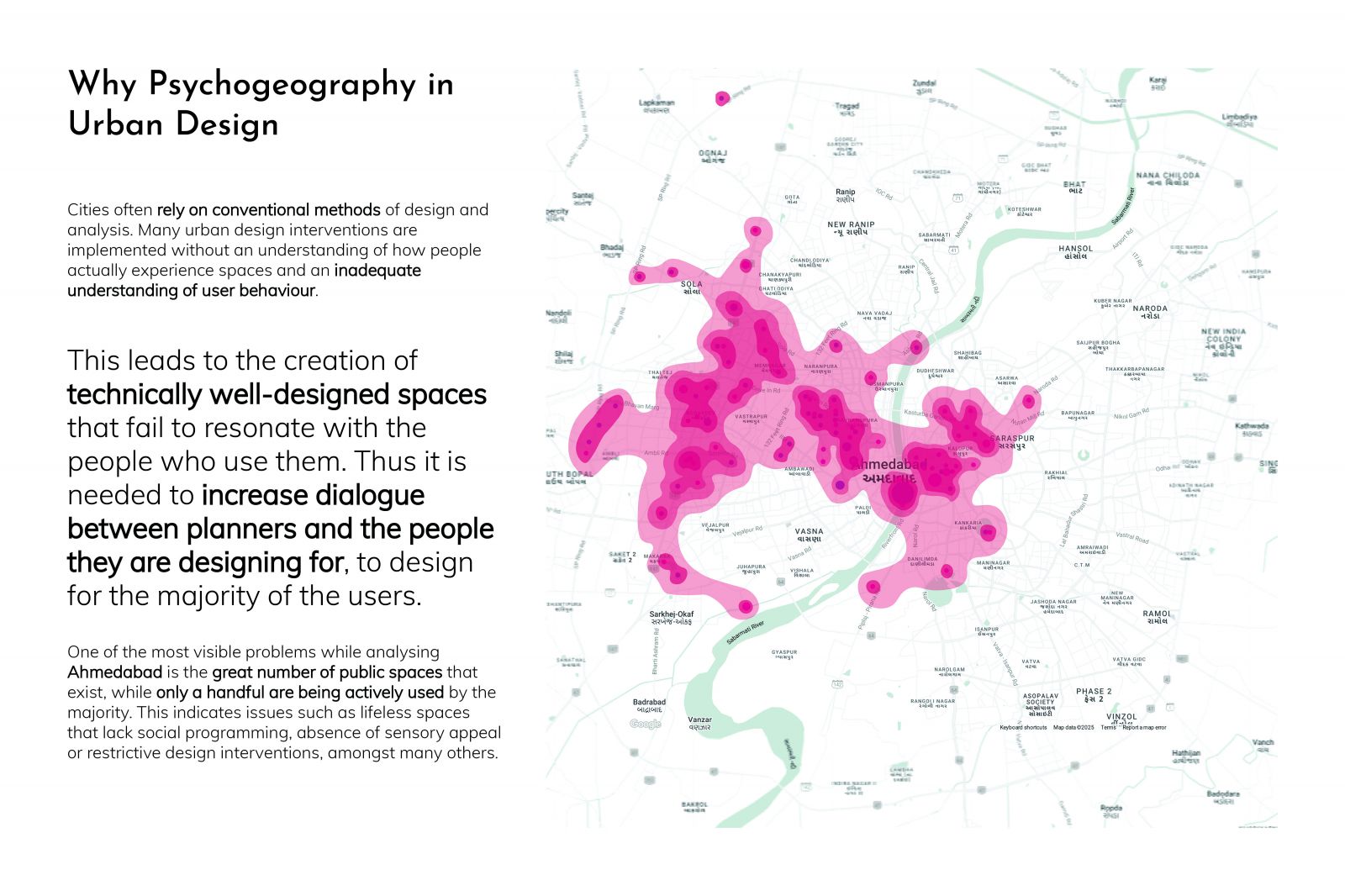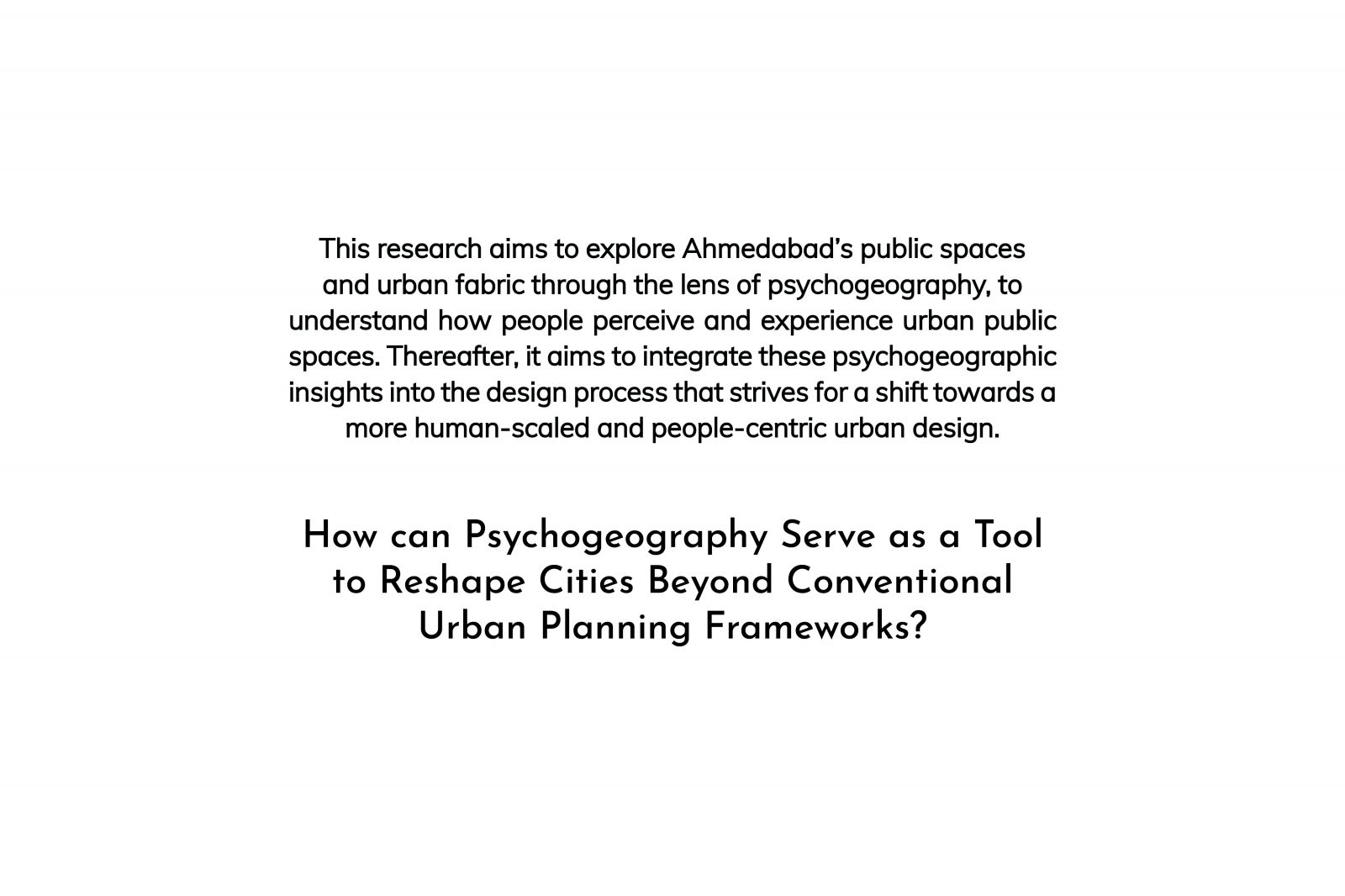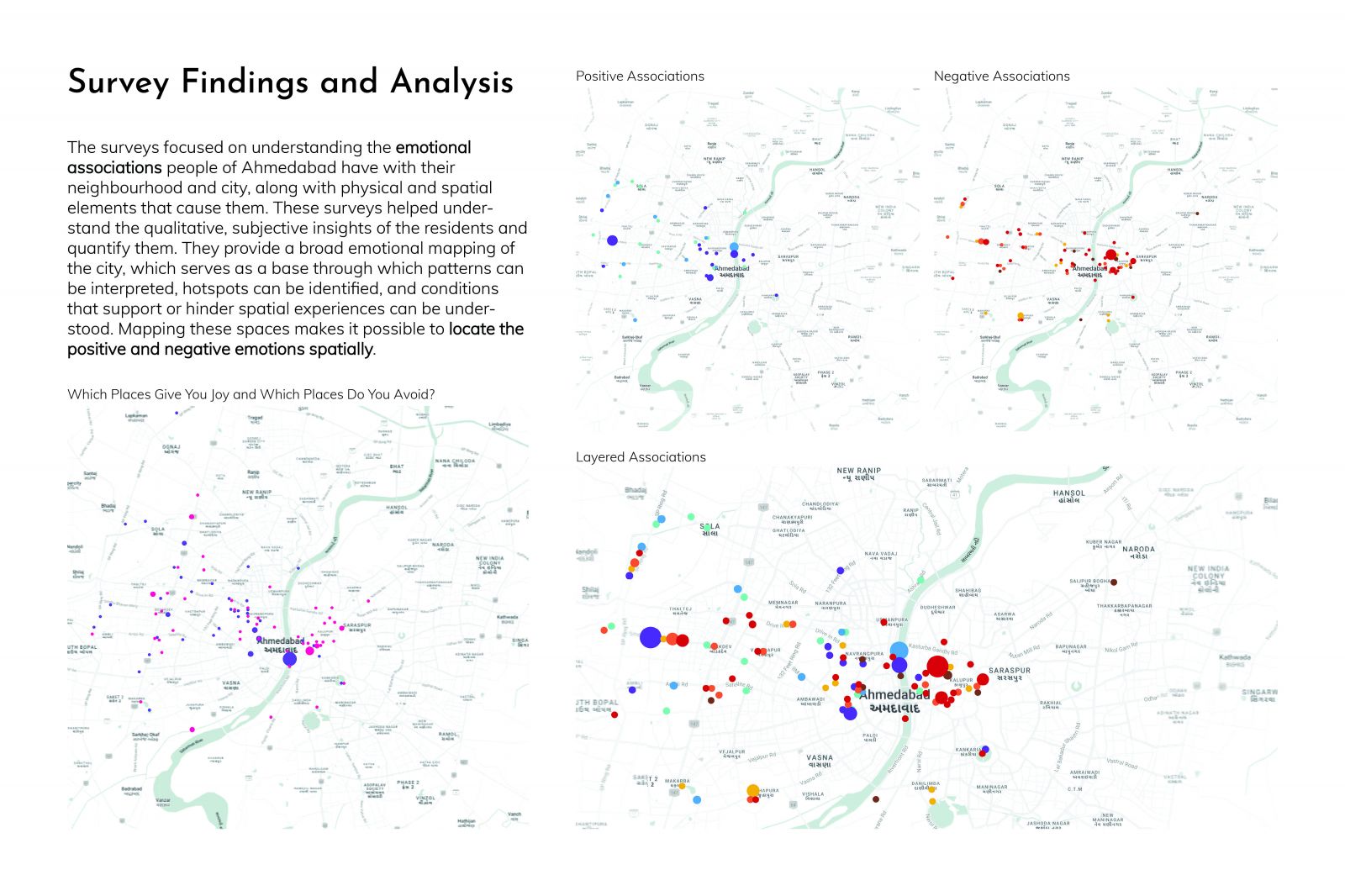Your browser is out-of-date!
For a richer surfing experience on our website, please update your browser. Update my browser now!
For a richer surfing experience on our website, please update your browser. Update my browser now!
Indian cities are being rapidly shaped by political and market-driven forces, where economic
growth takes precedence over inclusivity, community well-being, and human experience.
The needs of the majority are often overlooked, with little to no dialogue between planners
and the people they design for. This leads to a disconnect between how
spaces are conceived and how they are ultimately experienced.
In this context, this paper discusses the need for and benefit of psychogeography, not just as
a documentation tool but as an active method to inform human-centric urban design in the city of Ahmedabad.







